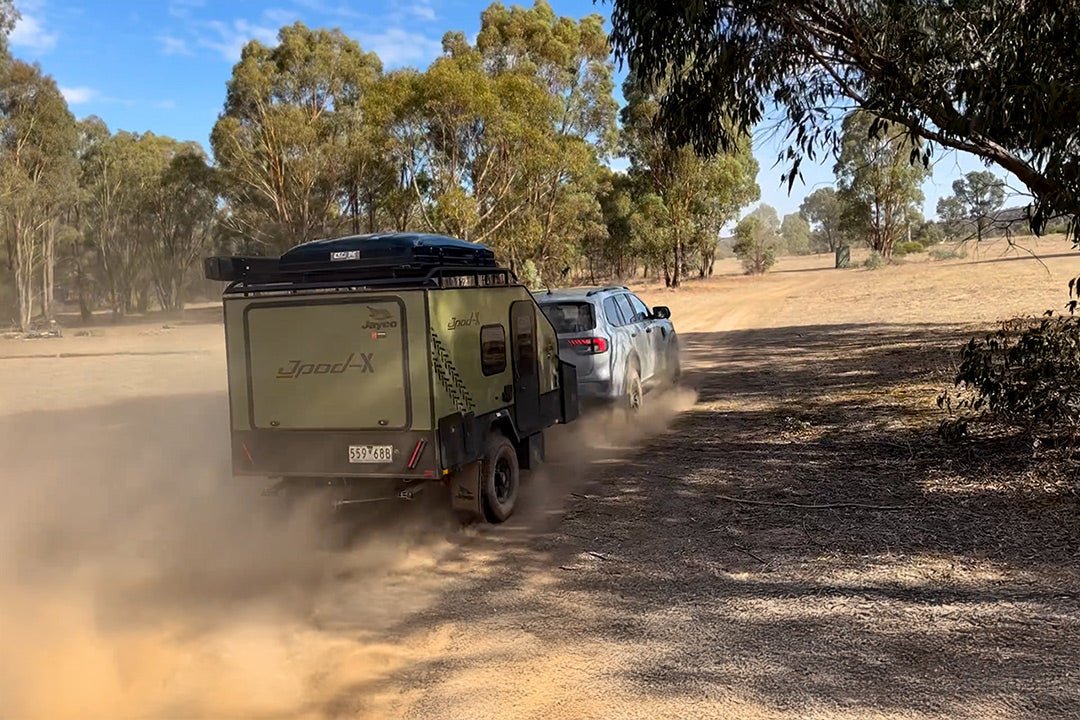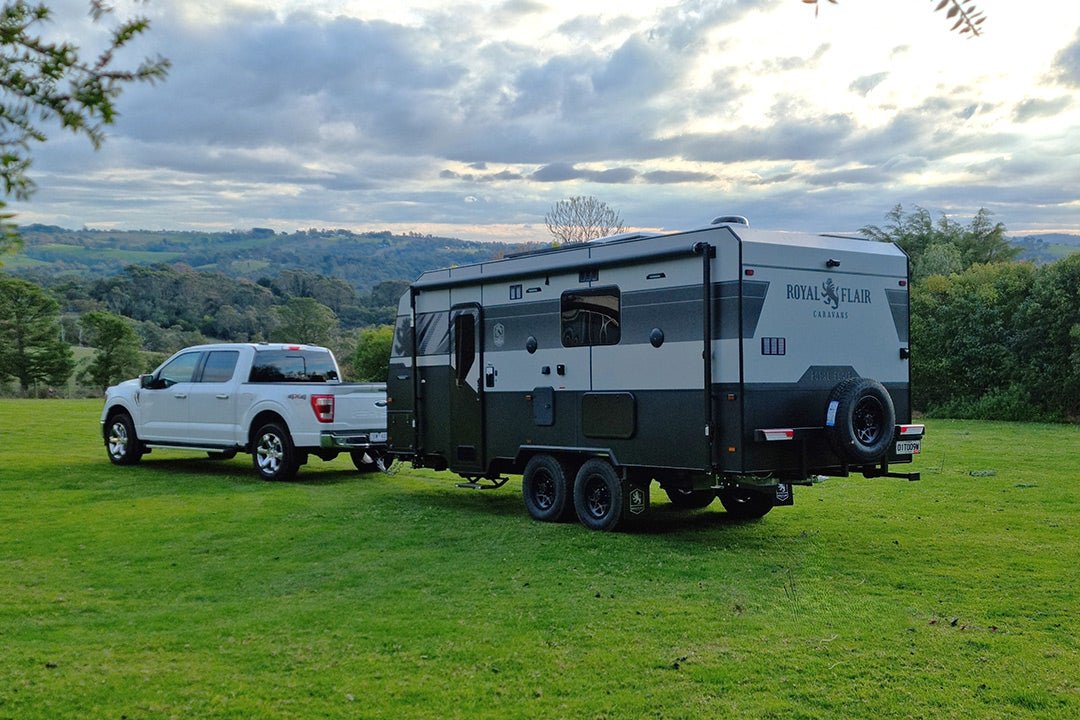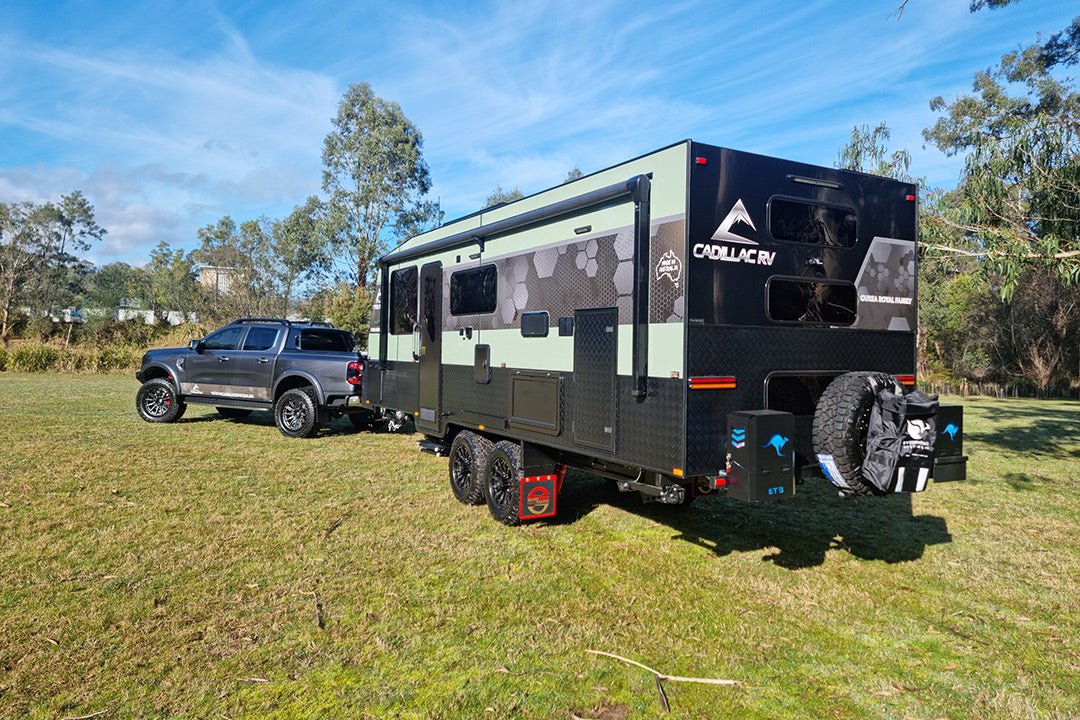Caravans for a cause

The humble Aussie caravan has traditionally been a symbol of freedom, travel and adventure. But it has also been a saviour for Australians experiencing poverty, a haven for those who have lost their homes in natural disasters, and a sanctuary for those who suffer from mental illness and find themselves estranged from loved ones.
Today, not much has changed. Around the country, RVs are being renovated, repurposed and custom-built for a far grander purpose than just travel. They are being primed to house homeless war veterans, helping women who are victims of domestic abuse and transporting first-class cardiology testing facilities to folk who live in the bush.
It’s heavy, yet heart-warming stuff. Here we discover four different groups who are using caravans to radically change lives.
SOLDIERING ON
Ex-serviceman Ian Bottrell feels very passionately about the livelihood of other returned war veterans, particularly in his local area of Lismore, NSW.
“I have known a couple of homeless veterans, some of them were living under bridges,” he tells Caravan World.
“They go overseas in the service to places like Timor, Afghanistan and when they come home everything is lovely dovey with their wives and then all of a sudden the night terrors start, and they are screaming in the middle of the night.
“It frightens the daylights out of the wives and they can’t put up with it and they say ‘get out’. But they don’t have enough money for a flat or a house.”
When he came up with the idea to renovate an old caravan to provide respite housing, the President of his local Lismore Men and Community Shed, was on board. George Sparnon had lost everything in a house fire in 2015 and a retired veteran had gifted him a caravan to live in while he got back on his feet. So he saw Bottrell’s idea as a way to pay it forward.
A woman heard about their plan and donated an old 22-footer, so the pair began renovating. It soon expanded to become a Men’s Shed community project and blokes of all skillsets began to chip in.
“I am a truck driver but I’ve done a lot of work on the farm so I know my way around tools,” Bottrell says. “We had chippies, painters and electricians and all members of the Shed and we just kept on rotating.”
Once word spread, local businesses began offering materials: sheets of ply to fix the walls, insulation off-cuts, paint, beds and a local caravan repair centre gave aluminium sheeting for the walls as well as doors and window frames. Community members stepped up too, donating crockery, cutlery, bedding and linen.
The final result is one van transformed into two living units with separate entry doors. Each has a simple setup with a bed, a fridge, microwave, small gas cooker, kitchen bench and lighting. There's no toilet or shower but a portable toilet can be added.
The initiative was fully supported by the local Veterans' Advocacy Centre in Alstonville, but the issue with the caravan being used for its intended purpose is where to put it. Ideally it will be located within a caravan park or camping area with toilet and shower facilities and negotiations are still ongoing.
However, that isn’t stopping Bottrell and the Men’s Shed fraternity. They have two other vans in the wings and they hope to start on those soon.
“We have an organisation up here called Women Up North and it is for women who have suffered domestic violence,” he says.
“The next van will have two double bunks — a double and a single up top and then two singles so you can put two families in it.”
The renovated van is named Hope, and the next two will be called Faith and Charity. Bottrell says it has been a lot of work, but it will be worth it in the end.
“It has been a labour of love, but I am busting my butt trying to get accommodation for these people,” he says.
DOWN IN A TOURIST TOWN
Another grassroots community group trying to help its homeless locals is the Denmark Homeless Project in Denmark, a tourist town near Albany in southwest Western Australia.
Hazel Moon, a representative of the group which has existed for 20 years, says homelessness is a growing problem for the region as a result of domestic violence, gentrification and poor government planning for cheap housing. Sadly, tourism has also contributed.
“We have the advent of Airbnb and a lot of people are buying investment properties here so now we find the pool of affordable housing is shrinking really rapidly,” she says. “Because it is a tourist town, it all has to look very pretty on the outside but there is an underbelly here.”
Homeless people in the region aren’t always those living visibly on the streets: many have lived in the region for 15-20 years.
“It is impacting on everybody, particularly long-term locals and that aspect of homelessness is very hidden here,” she says. “People are couch surfing, living in cars, and a lot are living in caravans.”
Those using caravans as temporary homes so do illegally. As with the Lismore example, the issue of where to put the caravan once it is renovated is an ongoing issue. Moon says strict local shire regulations mean you cannot stay in a van for more than four nights in one place.
The group is negotiating with local churches to locate a caravan on its property, and is also reaching out to local caravan parks. In conjunction, they are also finalising a homeless policy to present to council in order to induct an official strategy and to review local laws.
The group, which currently distributes food, clothing, blankets and tents to those in need, has started a GoFundMe.com campaign to raise money to buy a caravan with the intention of renovating it as temporary respite housing.
The idea of using a caravan is “pragmatic” according to Moon.
“You can get a decent caravan for $3000 secondhand, you can move them, you can tow them behind a car and they are easier to tuck away,” she says.
“Also, then you have the option of staying in caravan parks.”
WHITE CARAVAN FOR WOMEN
Sydney marketing and PR specialist Juliet Potter had a very similar idea to renovate a van to house women and their families who were suffering from domestic abuse, but along her journey she envisaged an even grander plan.
Potter had done some work within the mental health space and realised how severe the situation was for women. Data from the 2011 census reveals 45,813 women were homeless with 55 per cent of these due to domestic abuse. And homelessness among women has grown 10 per cent since then.
She saw a caravan on Facebook and bought it with the intention to transform it into a space where women at risk could shelter. But, after a news story appeared in her local paper on Sydney’s northern beaches and she was inundated with offers of help to revive it, she thought bigger — why help just one family when she could help many more?
“The connotation of staying in a caravan is kind of fun and the kids wouldn’t think it was a big deal and it would be more like a holiday than a punishment,” she says.
“Homeslessness for women is terrifying and it is happening at such a massive rate and I think everyone is going ‘what do we do about it’?
“After spending hours talking to women who were reaching out to me for help after the story came out, I thought, why don’t we start a charity that we can drive this message about homelessness through about the caravan, and the positive connotations of it.”
Potter’s charity, White Caravan, was launched in August last year and its focus is to help women who are in abusive relationships to develop a separation strategy before they physically leave their home to ensure they are financially stable, employable, prepared and also to avoid costly solicitor’s fees at Family Court.
Services she and her associated partners offer include debt recovery, upskilling and training, separation and divorce strategy, mediation services and financial management advice. She has also brokered a deal with hotel chain AHL Group, to use rooms within its 580 sites as temporary accommodation in addition to the single van she plans to renovate.
In addition, Potter plans to use caravans in a positive, community-based way. She has been gifted 11 caravans from well-wishers and hopes to get community members to pitch in to help renovate them to become mobile cafes to both earn money to fund White Caravan’s programs.
“These are all vintage vans — a lot of them are old Viscount models,” she says. “We have a team that are starting to renovate them but the more people who pitch in the better.
“We have had so many people call and say ‘I want to help’, especially men who have their own stories about living in single parent families or who have a daughter or sister going through something similar.
"No one in this space has had a project where men can come and get their hands on to something and literally fix it.”
HEART OF AUSTRALIA
Vintage van renovations are one thing, but a full-scale custom build is quite another. Queensland manufacturer Sunland Caravans recently constructed a ‘medical motorhome’ for Heart of Australia, an initiative that takes specialist medical clinics-on-wheels into remote communities in Queensland.
Created by cardiologist Dr Rolf Gomes as a specialist heart health service, it has now morphed to include gynecology, urology and neurology specialities among others. Each truck carries specialist equipment, consulting and testing rooms.
Gomes says people who live in the bush are twice as likely to die from heart failure because of their isolation. It takes hours to reach major centres such as Brisbane and Toowoomba, they must be away from work and family for long periods and it can cost money, so many put their health on hold.
“A gentleman might see his GP in Brisbane about chest pains he gets going up the stairs — he can duck out of work at lunch and see his doctor and have those questions answered,” he says. “That’s a lot different to when you are living in the middle of nowhere. They don’t know if they should go get some Mylanta or if they are about to drop dead from a heart attack. So what tends to happen is that patients don’t tend to talk about their symptoms.”
There are now three mobile clinics, the first two, Heart 1 and Heart 2, are driven by Kenworth K200 prime movers. They currently visit 16 communities, which will soon expand to 25, and set up ‘shop’ in towns so residents can drop in and get checked out. Each is staffed by specialists who join on a rotating basis and are paid significantly less than what they could earn in private practice.
“We started off with three specialists and now we have 21 which has been a great success story,” Dr Gomes says. “They just love doing it — they see it as part of their professional responsibility and they enjoy getting out in the bush.”
The Sunland partnership came about because the two prime-mover trucks need specialist drivers and can’t be as nimble as a smaller van. Sunland designed a mobile home with a slide-out that is fitted to an Isuzu F series cab-chassis, FTR34UU-SDHC. Its long list of equipment includes a treadmill for heart testing, ultrasound, wheelchair lift, life science gas installation and a Gynae chair as well as a consulting room, testing room and toilet. In order to be completely self-sufficient in remote areas, a hybrid power supply system incorporates solar panels, battery storage and a mammoth diesel generator. It also has a fully automatic levelling system and high-tech computer and internet facilities.
Sunland Caravans owner Roy Wyss said it took more than 18 months to discuss, plan and build Heart 3 which was a massive logistical undertaking.
“We are no stranger to building things that are different, but working out what they wanted and trying to fit it into a relatively small area and get all that equipment in was quite a feat,” he says.
“We had height restrictions, we had width restrictions which we normally do with caravans but we had to fit in a huge generator, the entire roof is nothing but solar panels which then created problems for installing air-conditioners into the ceiling, and then there was the wheelchair lift that had to be put on to it and the height and width you need for a treadmill.”
The RV has a full-perimeter steel frame, clad with locally produced fibreglass skin. Wyss says bout $160,000 worth of work went into construction with some of that donated in kind. But whatever Heart of Australia did pay was nowhere near commercial rates.
“It certainly wasn’t a profitable venture but it was a rewarding venture for us,” says Wyss.
“It’s nice to know that we have been involved in something that has a wide-reaching social benefit, particularly for rural Australia, which we are passionate about.”
Heart 3 will be used in a more flexible capacity than its older siblings, which are on the road seven days a week.
“It’s what I call a floater vehicle — it is not limited to a route itself, it can be used in a more flexible fashion,” Dr Gomes says. “It also allows us to get out to more community engagement events like a rodeo in town and we can’t justify taking a big truck away because we would have to cancel patients.”







